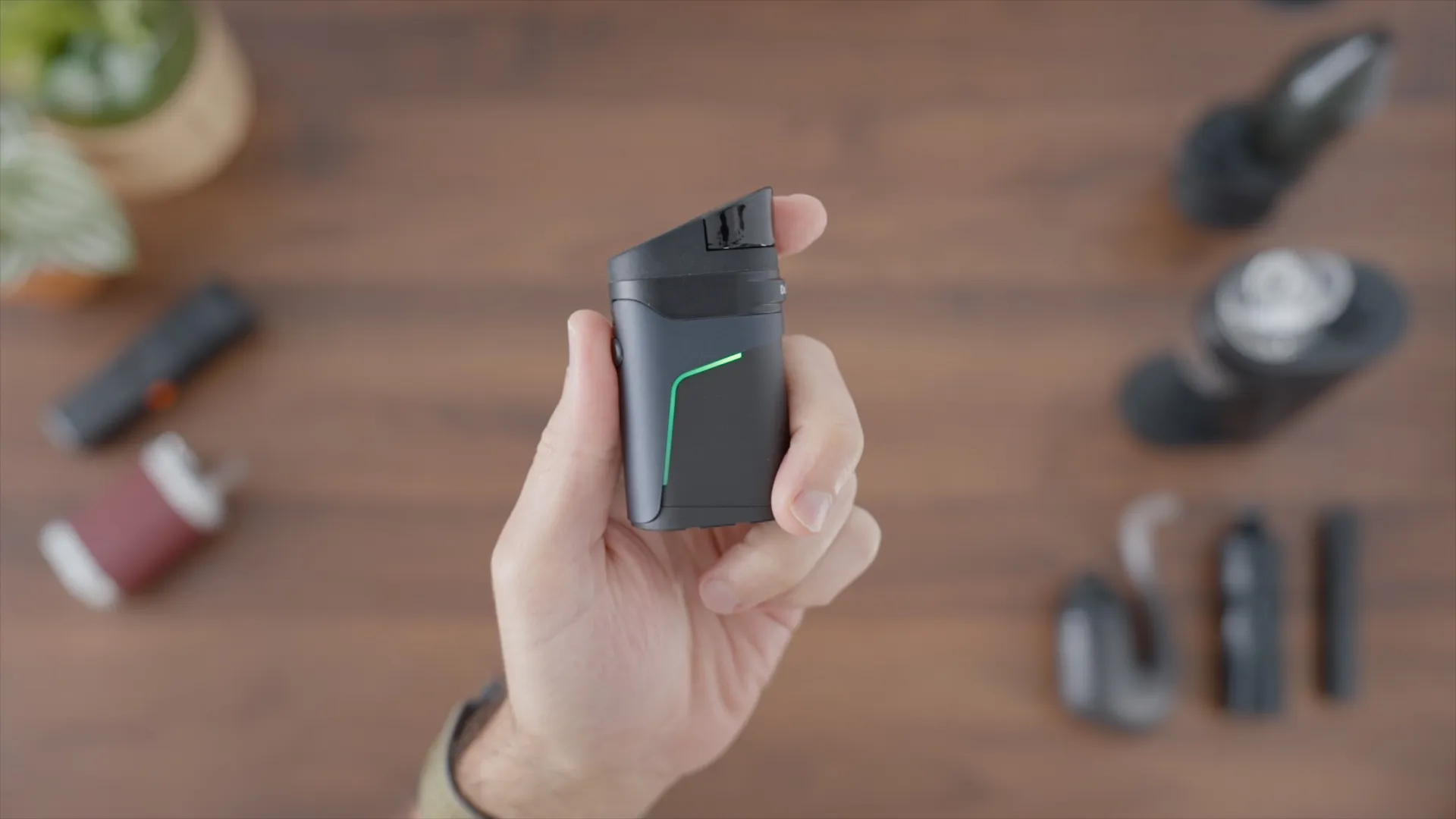

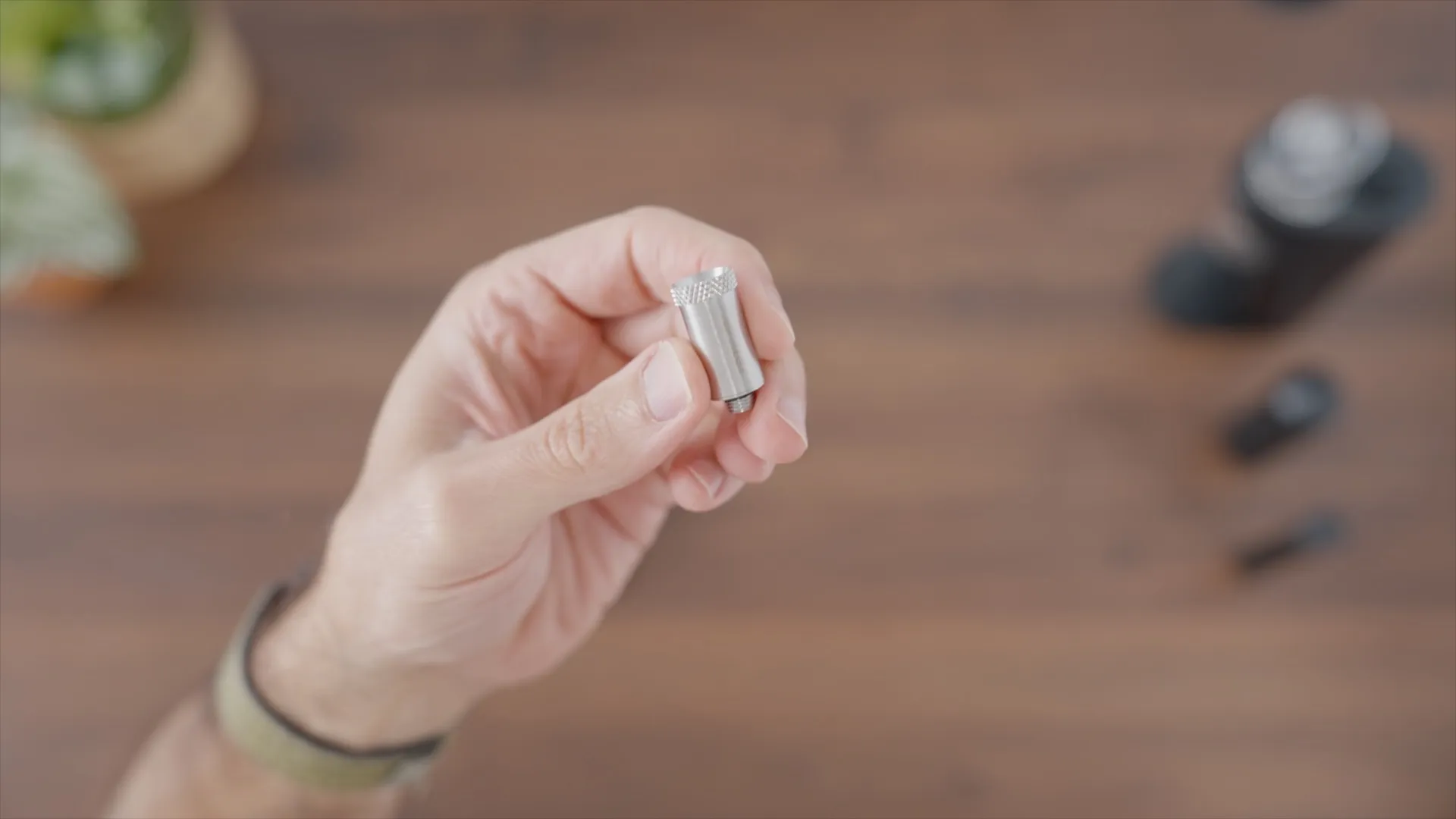
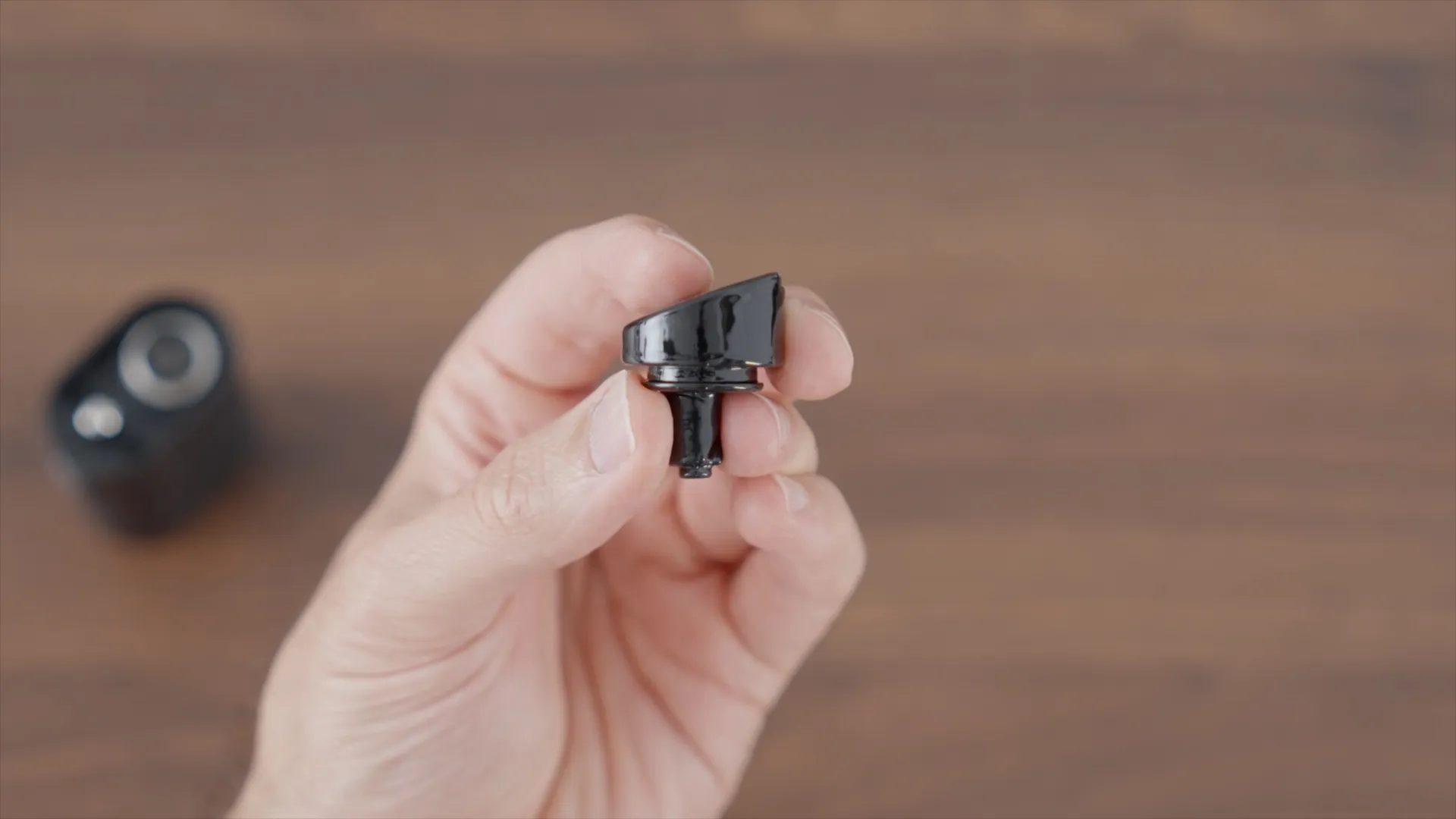
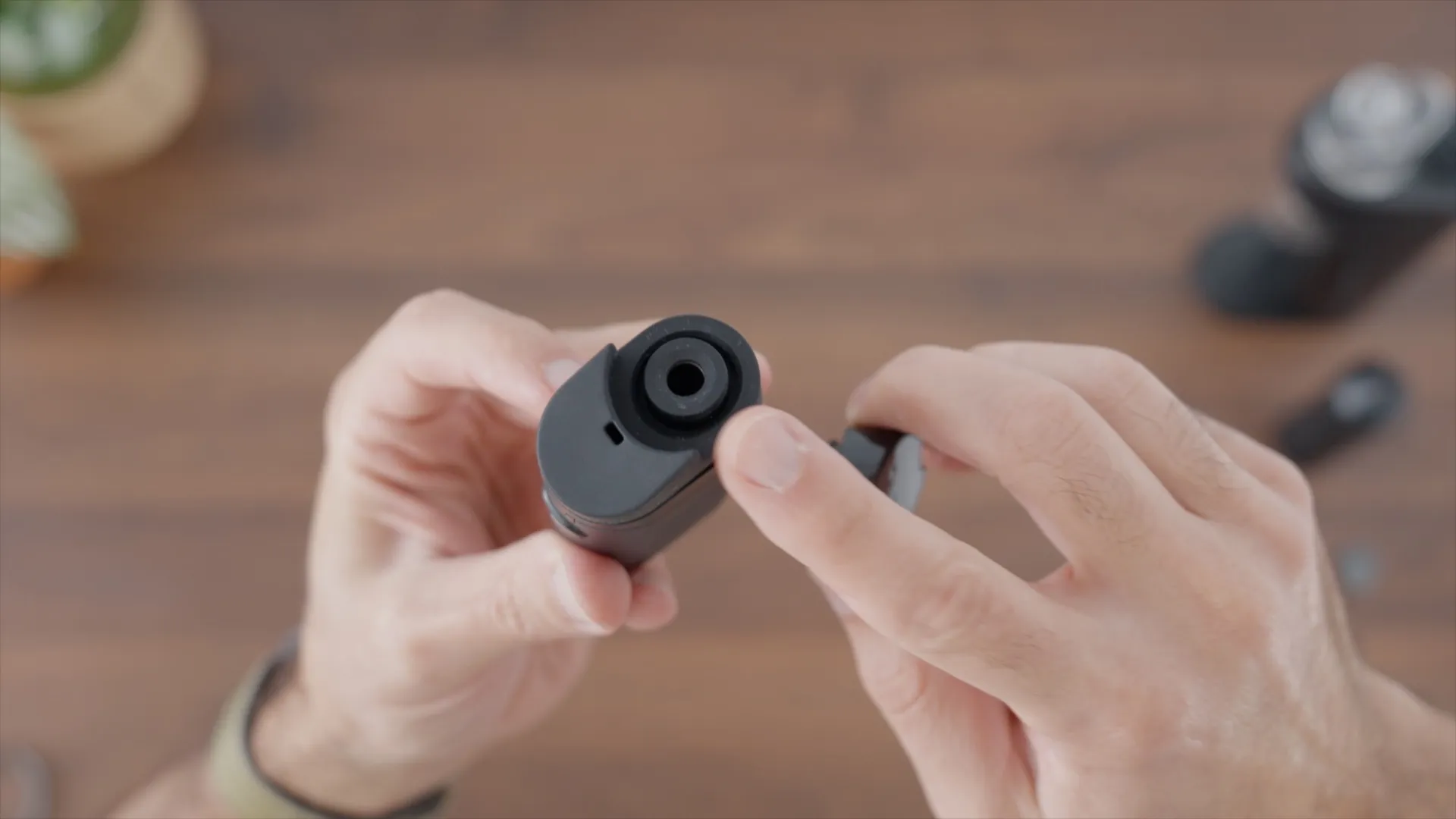

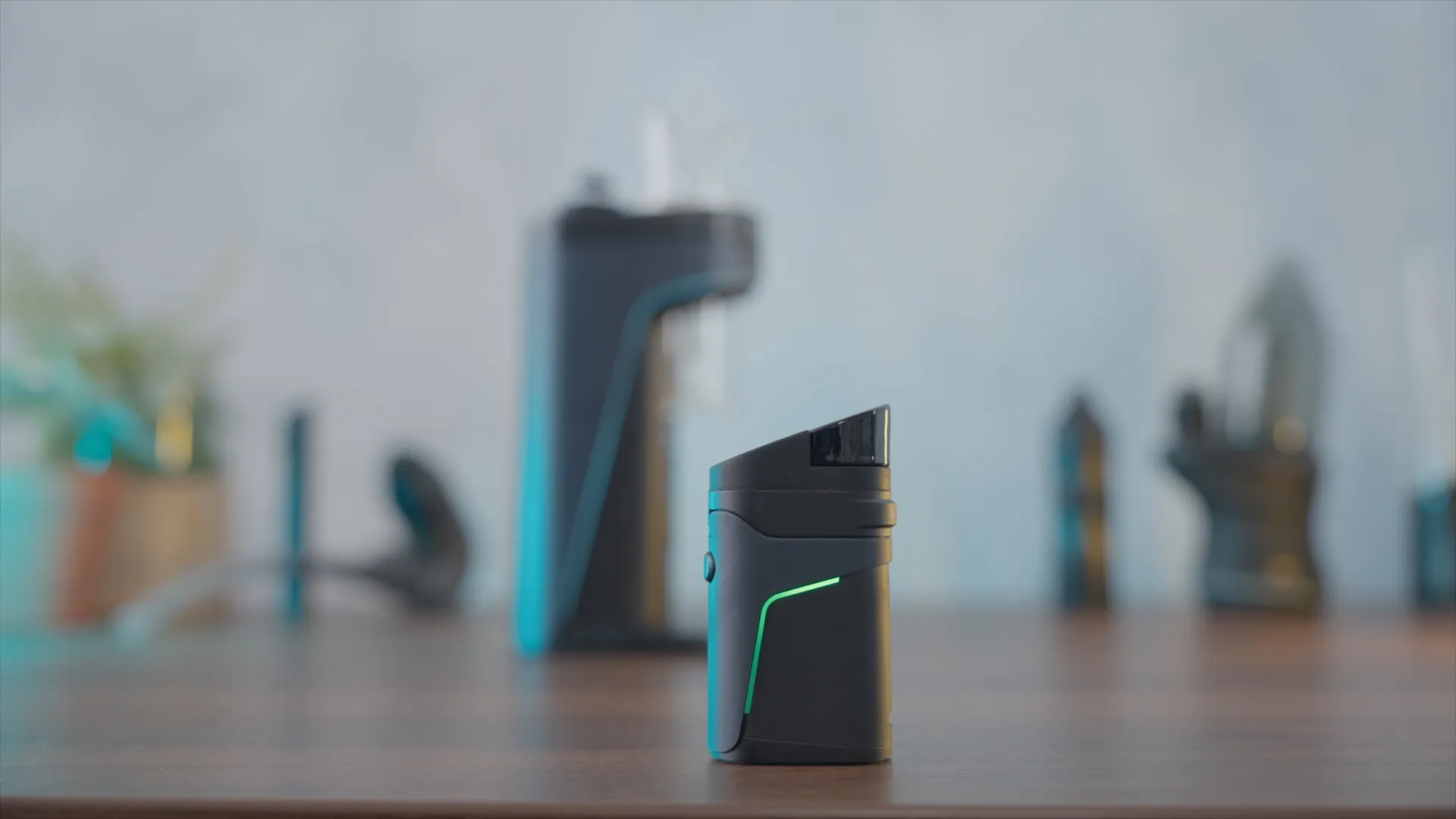

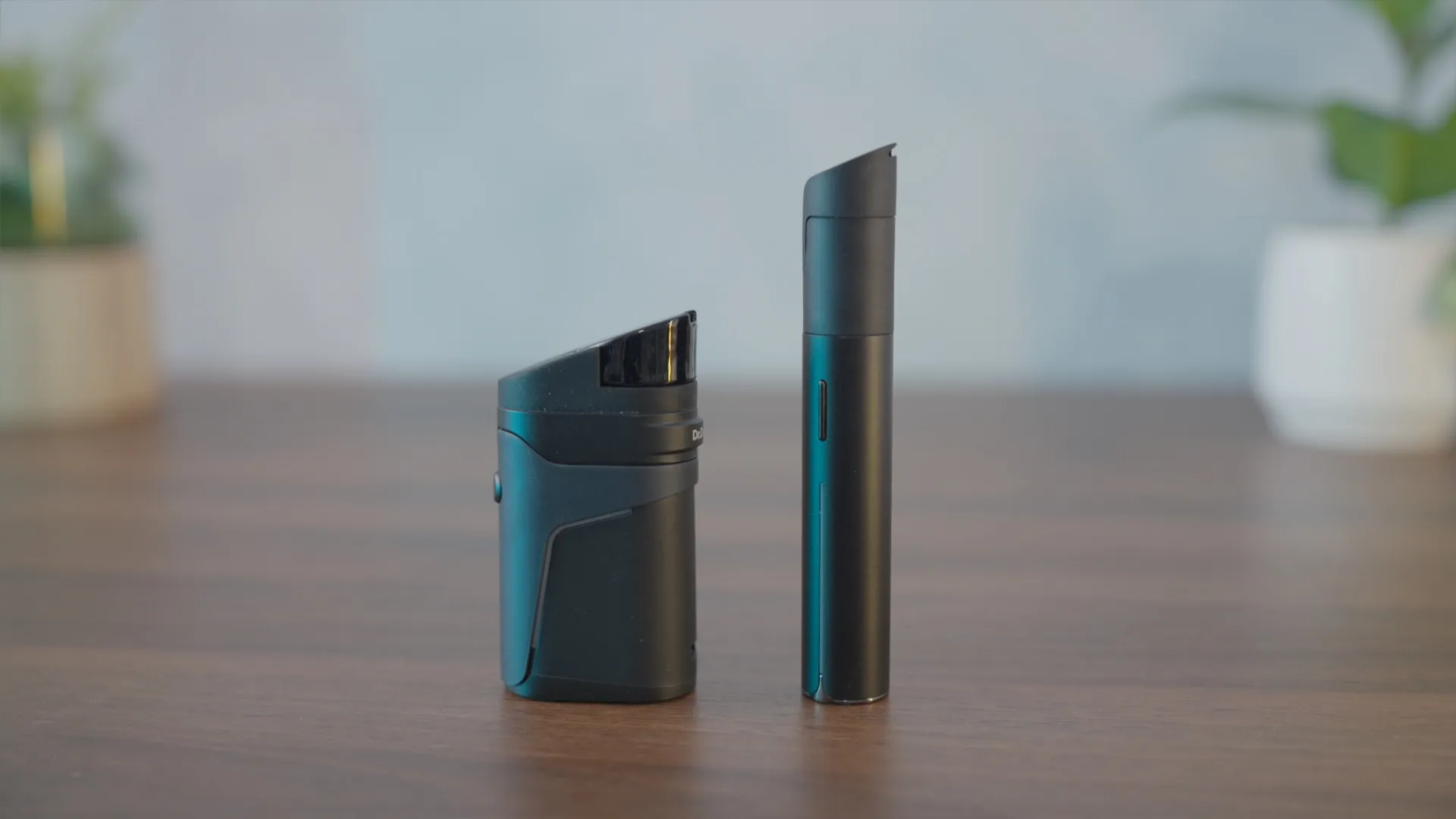
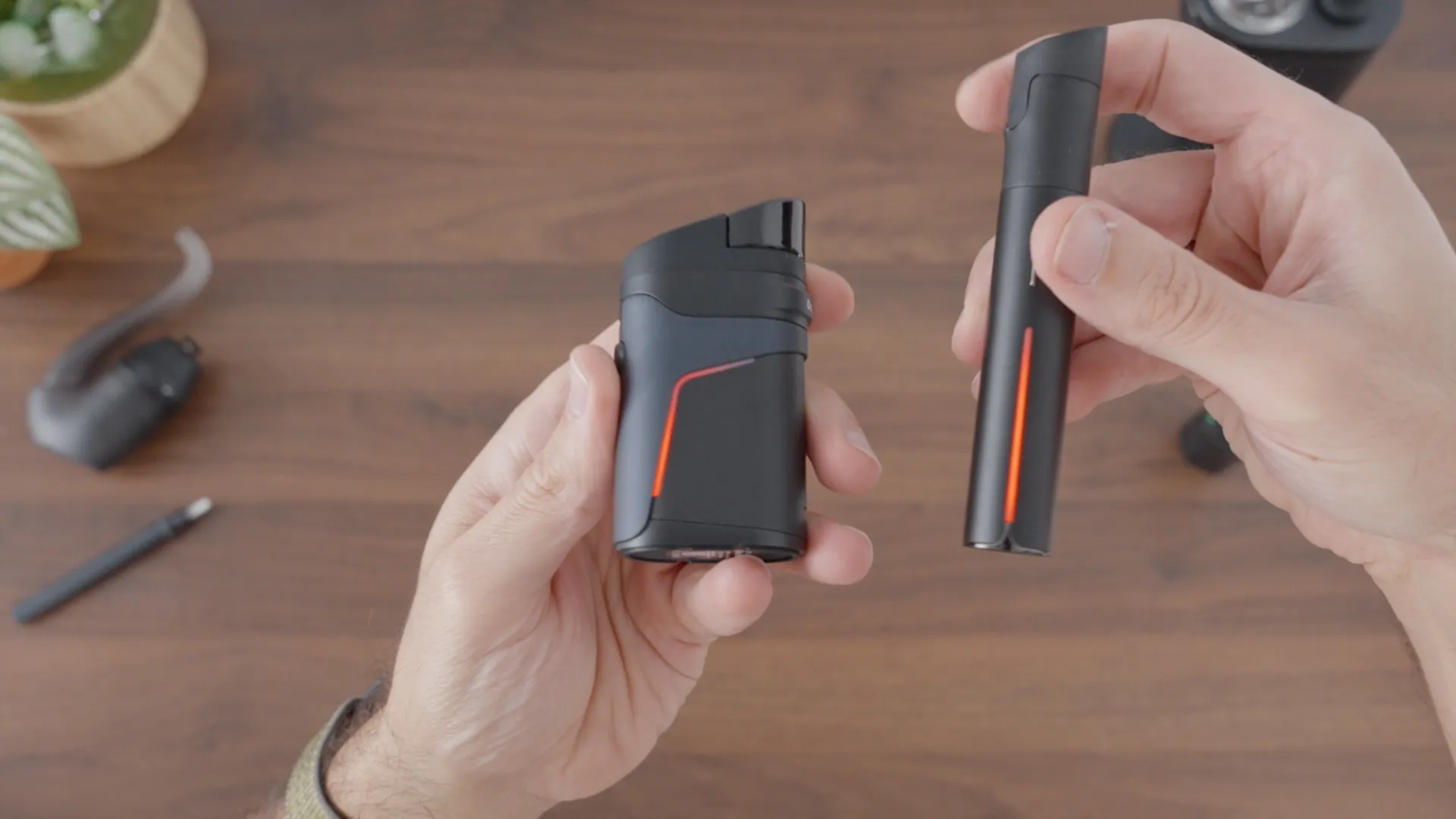
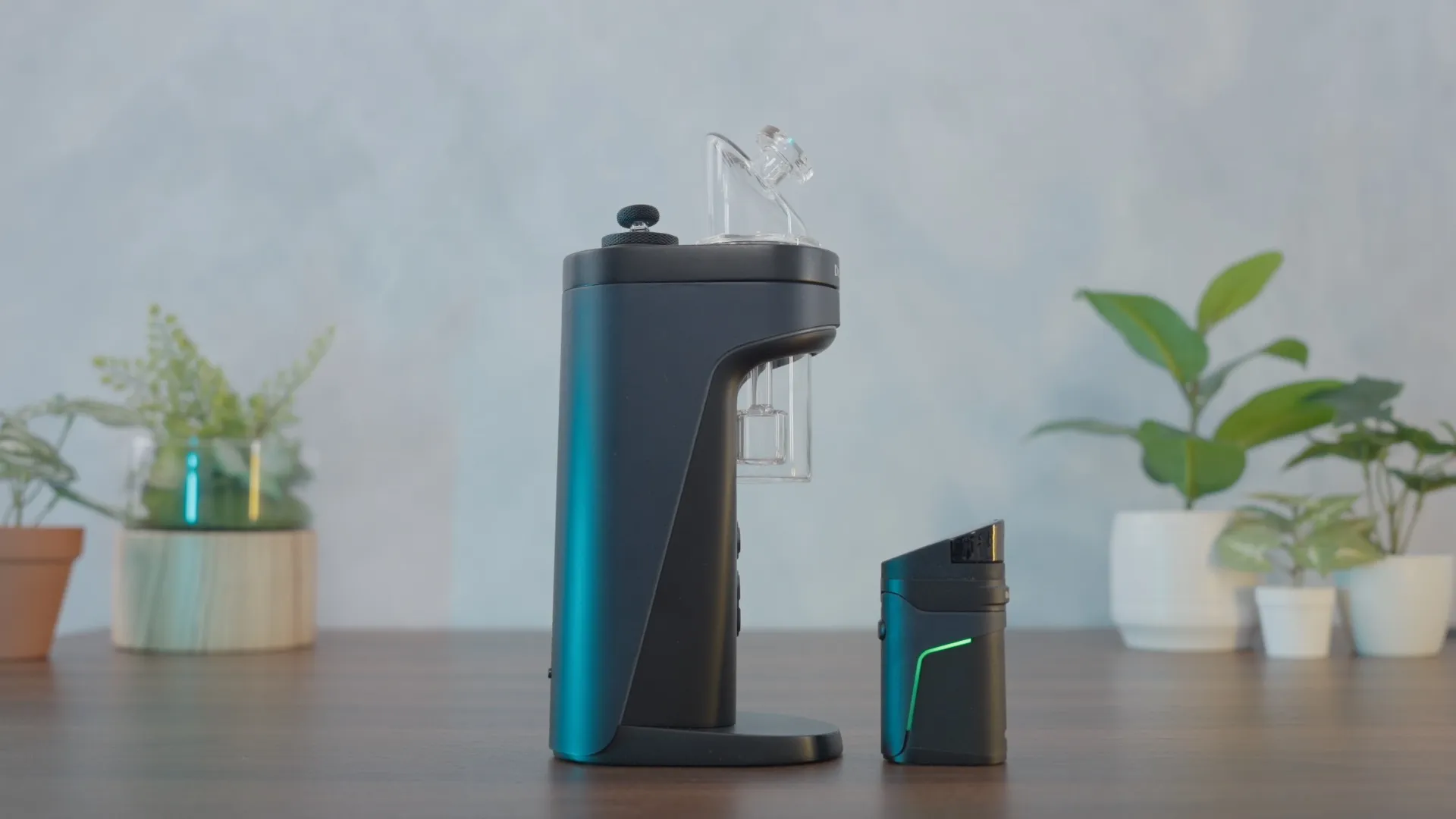
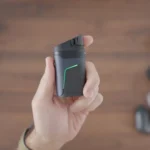
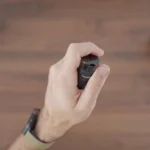
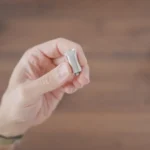


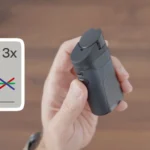
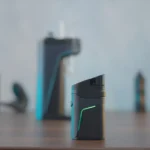
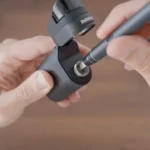


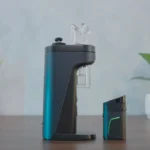
Review Summary
The Dr. Dabber Ghost 2 is a compact $120 dab pen that delivers top-tier performance in a pocket-sized form. It features 360° ceramic heating, real-time temperature control, and five heat presets (420–540°F) with three dynamic modes that let you fine-tune each session. The fully ceramic airpath and mouthpiece ensure pure flavor with zero plastic or silicone contact, It produces smooth, consistent, clean vapor, with great airflow, and solid build quality. The only downside is its narrow chamber opening, which makes a hot knife almost necessary for easy loading. Still, the Ghost 2 nails the essentials: flavor, precision, and reliability—making it one of the best all-around concentrate pens under $150.
- • #1 on Best Wax Pens
- • #1 on Best Dab pens
Pricing Info ⓘ
Comparison

Dr. Dabber Ghost 2
|
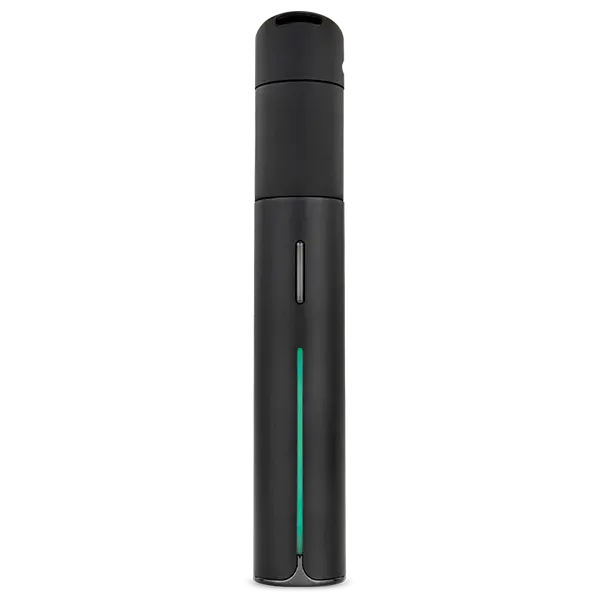
Puffco Pivot
|
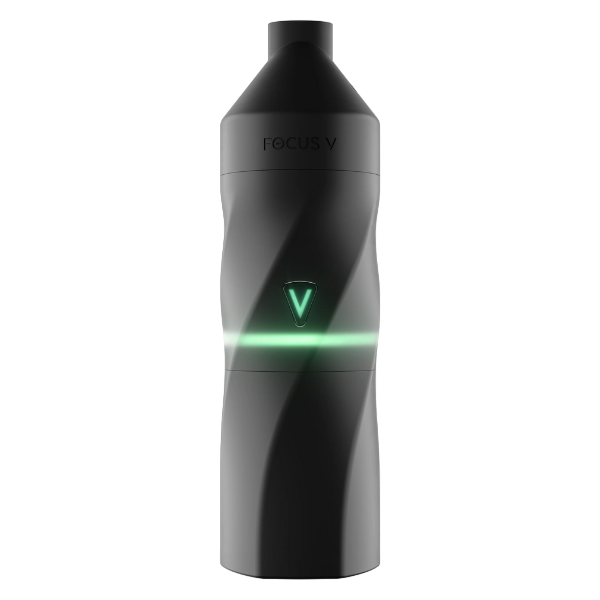
FocusV Aeris
|
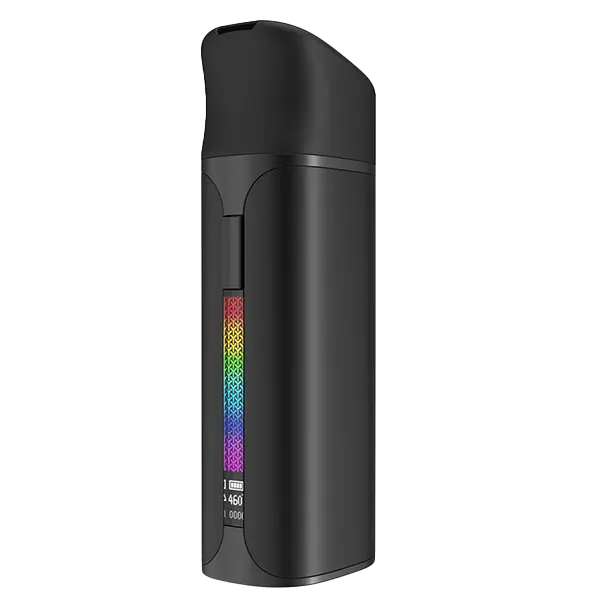
Pocket
|
|
|---|---|---|---|---|
| Score (1-5) |
4.7 Current Review |
4.4 |
4.5 |
4.5 |
| Brand | Dr Dabber | Pivot | FocusV | Yocan |
| Retail Price |
$120.00 |
$130.00 |
$199.00 |
$85.00 |
| Release Date | November 2025 | October 2024 | February 2024 | July 2025 |
| Compatible With | Concentrates | Concentrates | Concentrates | Concentrates |
| Vaping Style | Session | |||
| Body Material | Aluminum | Aluminum | Stainless steel | Aluminum |
| Mouthpiece Material | Ceramic | Silicone | Silicone | |
| Heat Up Time | 5 Seconds | 5 Seconds | 10 Seconds | |
| Precise Temp Control | ✗ | ✗ | ✓ | ✓ |
| Temperature Range | 4 Levels | 4 Levels | 365-600°F | 400-580°F |
| 510 Thread | ✗ | ✗ | ✗ | |
| Coil Type | Ceramic Bowl | 3D Ceramic | Ceramic Intelli-Core | Ceramic Bowl |
| Glass Compatible | ✗ | ✗ | ✗ | |
| Battery Type | Internal | Internal | Replaceable | Internal |
| Sessions Per Charge | 6-9 | 9-12 | 6-9 | |
| Charge Time | 1-2 Hours | 1-2 Hours | 1-2 Hours | |
| Charger Type | USB-C | USB-C | USB-C | USB-C |
| Passthrough Charging | ✓ | ✓ | ✓ | |
| Display Type | LED | Light Strip | LED | LCD |
| Smartphone App | ✗ | ✗ | ✓ | ✗ |
| Firmware Updates | ✗ | ✗ | ||
| Session Mode | ✓ | ✓ | ✓ | ✓ |
| Adjustable Airflow | ✗ | ✗ | ✓ | ✗ |
| Warranty | 1 Year | 2 Years | 1 Year | 30 Months |
Video Review
Background
The Dr. Dabber Ghost 2 just dropped, and I’ve been daily-driving it for over a month — logging in more than 100 sessions. In this review, I’ll break down the design, chamber, performance, and drawbacks, and we’ll see how it stacks up against its closest rival, the extremely popular Puffco Pivot.
The Ghost 2 retails for $120 directly from Dr.Dabber, which puts it right under the Puffco Pivot ($130), so it is definitely priced competitively. Dr. Dabber has already made waves with the Switch 2, arguably taking the “Best E-Rig” spot from Puffco, and it’s pretty clear they’re aiming to repeat that in the dab pen category.
Quick note: I finally convinced Dr. Dabber to give my readers a discount on the Switch 2! I’ve got a $50 code – VG50 – valid on the official Dr. Dabber website — but I’m not sure how long it’ll stay active, so grab it while it’s live if you’re interested.
That said — let’s talk about the Ghost 2.
Design & Build
So, right off the bat — this thing is tiny. It fits easily in my palm and looks like a small “gas station vape-bar” that wouldn’t raise any suspicion when used outdoors or in public. It feels solid, with a slightly rubberized matte finish that doesn’t get slippery.
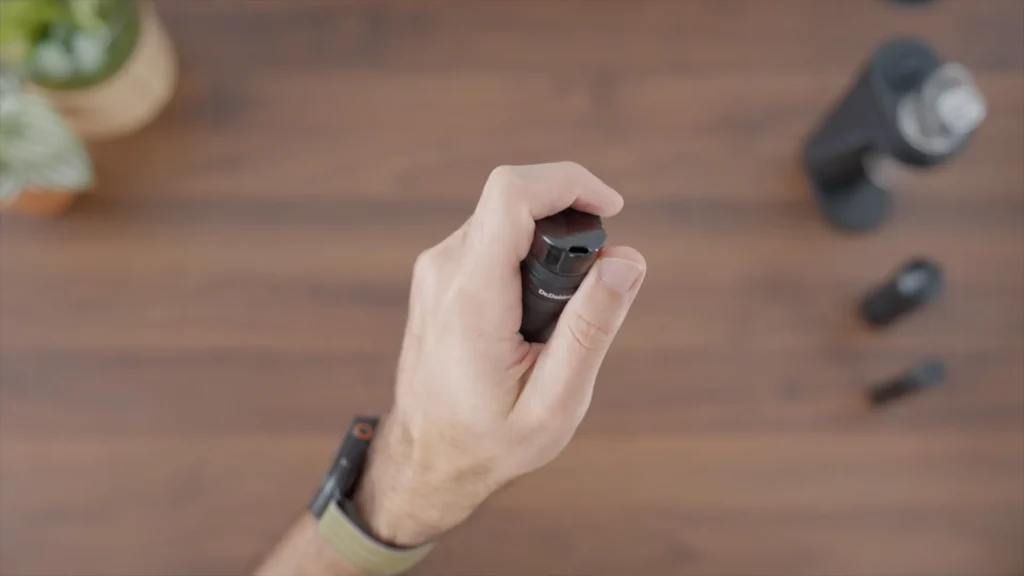
It has a single activation button and a lightbar that indicates heat settings and status updates. The lightbar looks very similar to the one on the Switch 2, and overall, the two devices share some design cues.
Chamber
It has a knurled grip for easy unscrewing, and the chamber itself is fairly narrow and deep. It’s made from ceramic and features 360-degree heating with real-time temperature control — meaning it makes instant adjustments to maintain the precise target temperature. This is a really important feature that I’ve talked about a lot in my reviews, and it’s probably the single most crucial factor in any concentrate device.

Mouthpiece
The mouthpiece assembly sits on top of the chamber and is made up of three parts: the mouthpiece itself, the housing, and a small airpath cylinder.
Both the mouthpiece and the airpath are made from black ceramic — and they’re the only two components that actually come into contact with the vapor. The silicone housing simply holds them together in place; it doesn’t touch the vapor at all, keeping the airpath pure and free of silicone or plastic.

The mouthpiece has a slightly pointy edge that’s very comfortable to use, and I’m really glad they went with ceramic here instead of silicone.
One very clever design choice is that the mouthpiece is easily replaceable. Take the Pivot, for example — I bought a few compatible tops for it, and they’re not very secure. Plus, trying to leave them standing on a desk is a disaster ready to happen.
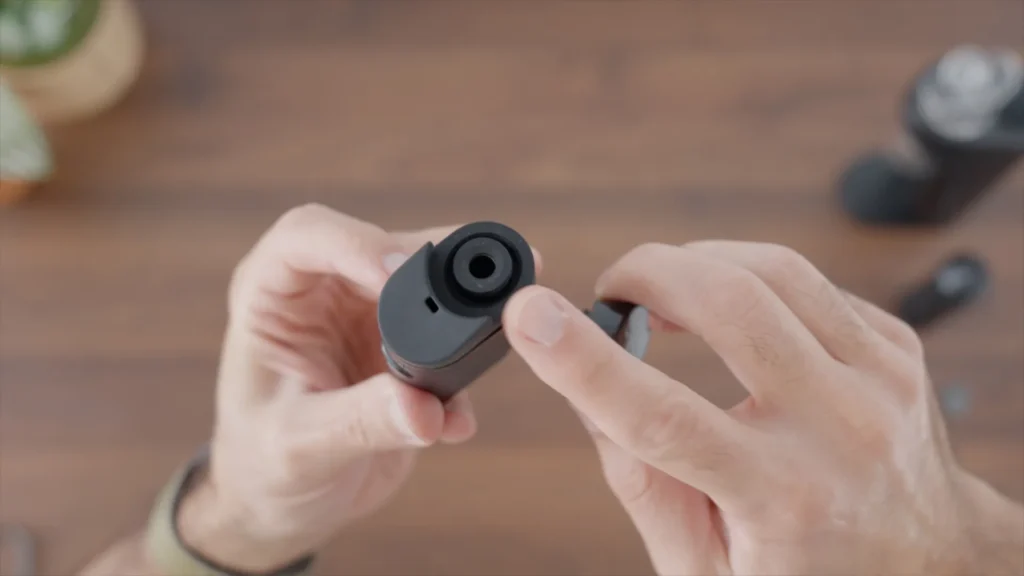
But with the Ghost, the option to upgrade the mouthpiece is built right into the device. Dr. Dabber left a convenient little spout sticking out here, practically inviting the community to get creative and design their own unique glass tops or mouthpieces.
Usage
The usage process is pretty standard. Once it’s loaded:
- Hold the button to lock or unlock
- Click once to toggle through five temperature presets, ranging from 420 to 540°F
- Double-click to start heating up
Dynamic heating profiles
One unique feature that the Ghost borrowed from its “dad,” the Switch 2, is its three dynamic heating modes. Clicking the button three times enters path selection mode, which basically lets you choose whether you want the device to hold a steady temperature for the entire session, or have it gradually increase or decrease over time. The selection is communicated via the lightbar.
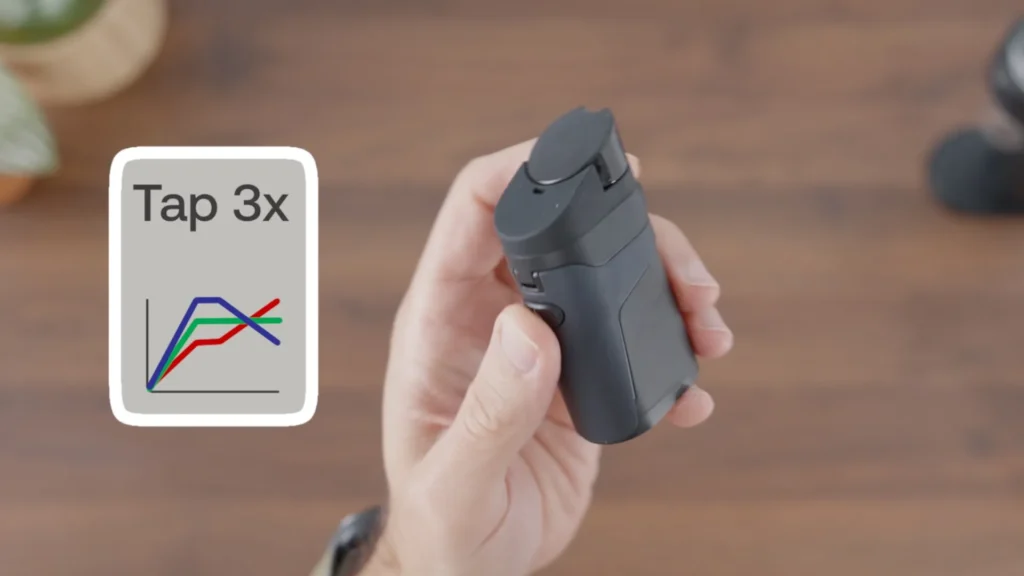
Performance
As far as performance goes, it’s everything you’d expect from a Dr. Dabber device. The vapor is smooth and incredibly flavorful, which tells me the temperature control system is doing an excellent job of keeping things consistent. Also, the pure ceramic airpath ensures pure flavor with zero contaminants.

I found myself using it mostly on the second or third temperature setting, in ascent mode — where the temperature starts a little lower and gradually builds up. This lets me enjoy those rich, low-temp flavors during the first couple of inhales, and then maximize extraction with a few more hits.
Drawbacks
Ok, let’s talk about drawbacks. I think the main one with this device is its narrow chamber. It’s not actually small — it’s fairly deep, so it holds more than you’d expect — but the opening is just wide enough to drop a small amount directly into the center of the chamber.
I always recommend using a hot knife, and that’s especially true here. It’s really the only clean and effective way to load sticky extracts into this chamber.
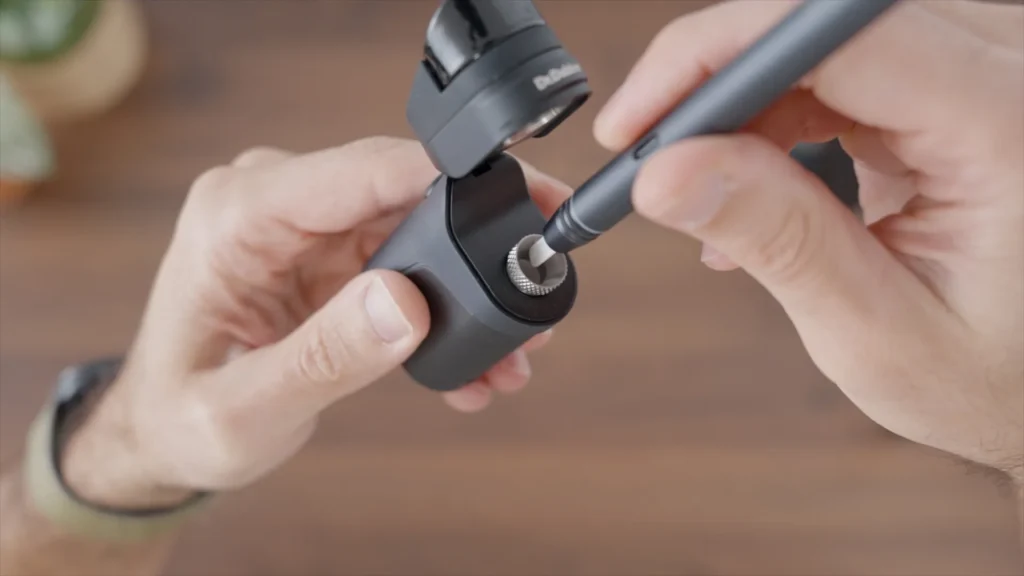
A few of my favorite hot knives are the-
- Dr Dabber Drop– slim and refined, made from the same materials
- Bear Quartz Trio 2.0– Adds a flashlight, and an infra red temp sensor
Ghost 2 vs. Others
Ok, so I think it makes sense to compare the Ghost to three devices: the Puffco Pivot, the FocusV Aeris, and maybe the more affordable Yocan Pocket.
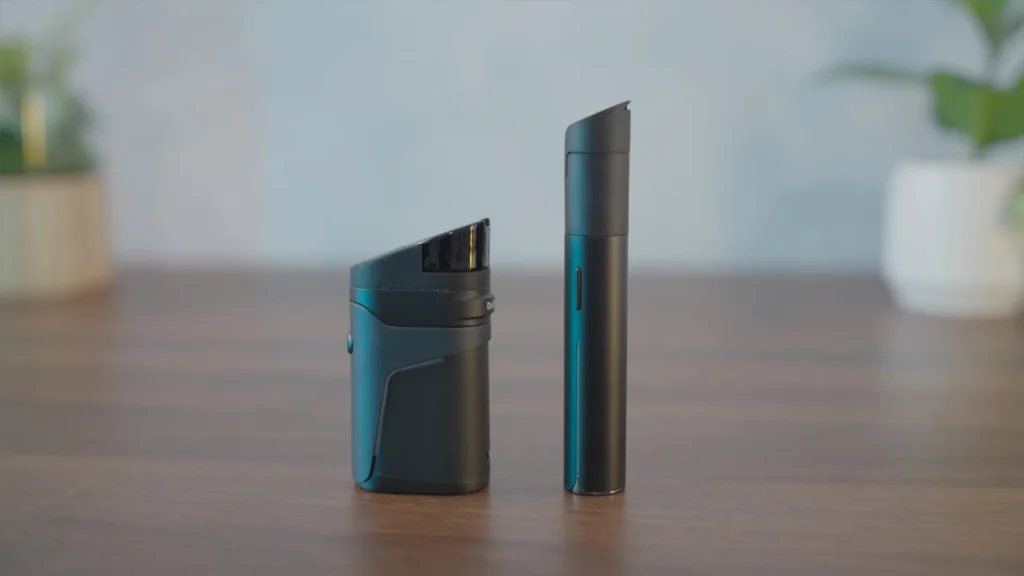
Ghost vs. Yocan Pocket ($85): The Yocan Pocket represents, in my opinion, the lowest acceptable tier of concentrate devices. It’s the cheapest option that still features real-time temperature control, but it’s nowhere near as refined as the others. I’ve also heard that a lot of units have reliability issues and arrive DOA, so only go for this one if your top priority is budget — and don’t expect too much from it.
Ghost vs. FocusV Aeris ($200): The Aeris is the most expensive of the group, and it has the largest chamber. It’s also the only one with app compatibility, allowing full customization of everything from session duration to temperature presets. It’s a step above the others in terms of features and flexibility.
Ghost 2 vs. Puffco Pivot ($130)
The Pivot is the closest match to the Ghost, both in price and features — so let’s focus on that.
- First off, there’s the obvious difference in form factor: the Pivot is pen-shaped, while the Ghost has more of a bar-style design. Both are discreet and easy to conceal during use, but the Ghost is definitely more stable when standing upright.
- Next, the Ghost features a ceramic airpath and mouthpiece, while the Pivot uses silicone. Ceramic is the clear winner here — it keeps the vapor pure and adds a premium feel. Plus, the Ghost supports custom glass mouthpieces, which I mentioned earlier.
- In terms of heat settings, they’re pretty similar, though the Ghost has an edge with its three heating profiles — steady, ascent, and descent — while the Puffco only offers the default steady mode.
- The Pivot does have a larger, wider chamber, which makes it a bit easier to load, but that doesn’t really translate into any noticeable performance difference.
- Both devices feel premium and well-built. Their light bars are more than just status indicators — they communicate settings clearly and give both devices a responsive, “alive” feel.
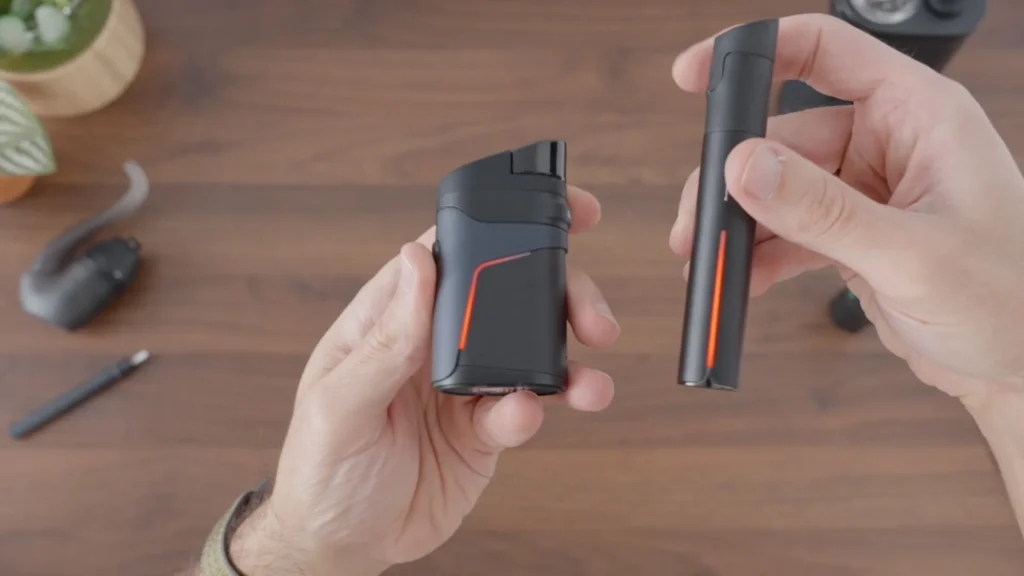
Bottom line
Ok so bottom line, is the Ghost a worthy contender as one of the best portable concentrate devices of this year? Hell yea.
The Ghost 2 nails what most people want from a portable concentrate device — simple usage, real-time temperature control, and most importantly- clean vapor and consistent performance. Sure, the narrow chamber isn’t ideal for clumsy loading, but that’s a small tradeoff for what’s easily one of the most refined pocket rigs in this price range.
It’s pretty amazing how far this industry and the tech behind these devices have come in just the last few years. I remember when non–temp-controlled devices — basically just a battery and a coil — were selling for two or three hundred bucks. Now, for a little over a hundred, we’ve got advanced devices we couldn’t have even imagined five years ago.
